| Early Spring Date: | April 18 |
| Late Spring Date: | June 1 |
| Best Dates to See in Spring: | April 28 - May 8 |
Spring: Yellow Warblers are common in the Washington metro area, but not at Monticello Park. They nest in deciduous habitats near water, including in Alexandria along Four Mile Run and along the Haul Road at Dyke Marsh. On average, about ten are encountered each spring at Monticello. They are most likely to be in the park around the first week in May.
Fall: Very few Yellow Warblers pass through Monticello in the fall. During most years, either one or none are recorded.
Where to See Them in the Park
Yellow Warblers sometimes forage in the brush on the knoll. On occasion, they will go into the stream to bathe or drink, but you are more likely to see them hopping around in the brush near the stream.
Physical Description
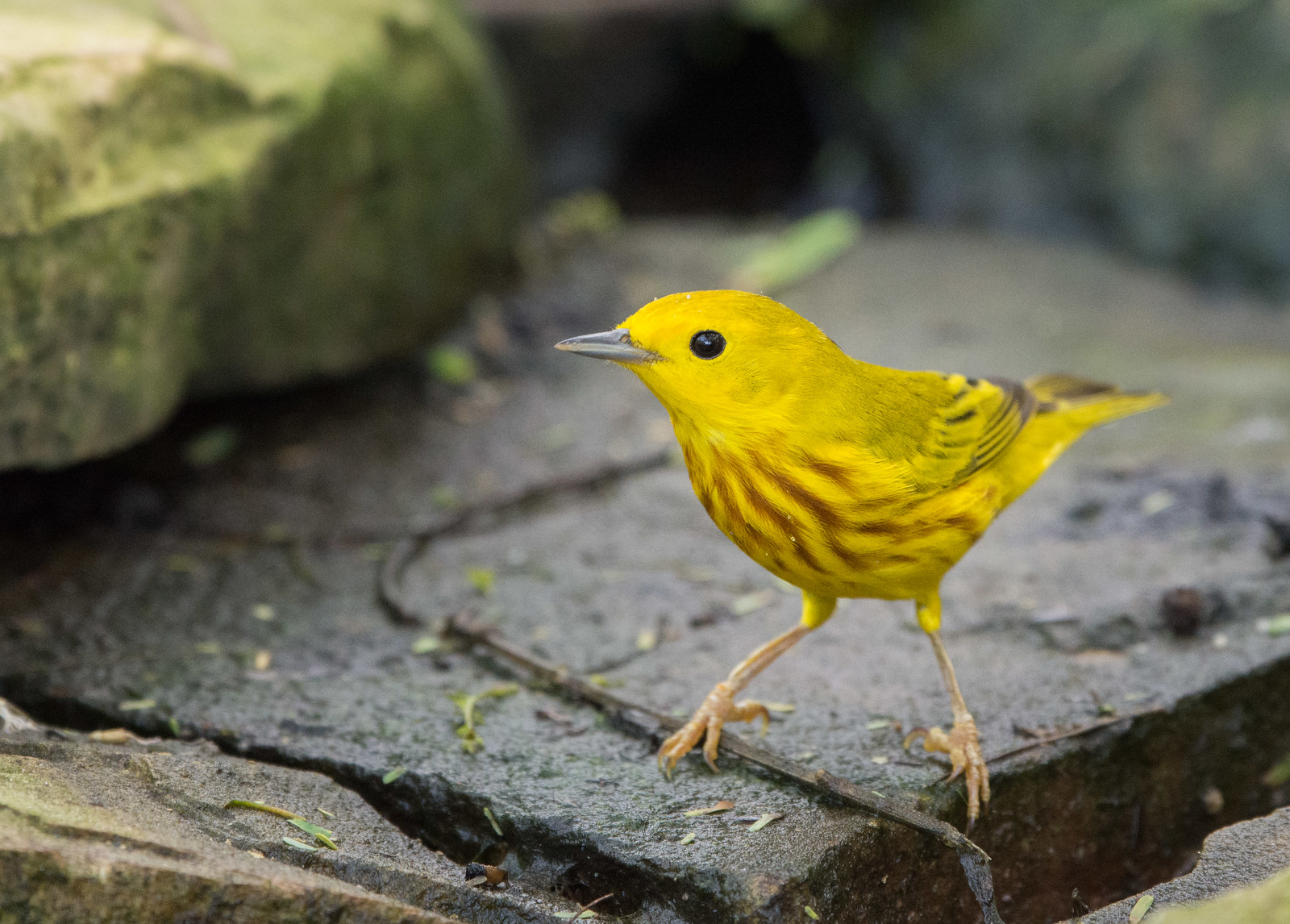
The male is bright yellow, with black eyes and a black bill. The eye and bill stand out on the yellow head. The underparts are yellow with heavy red streaks.
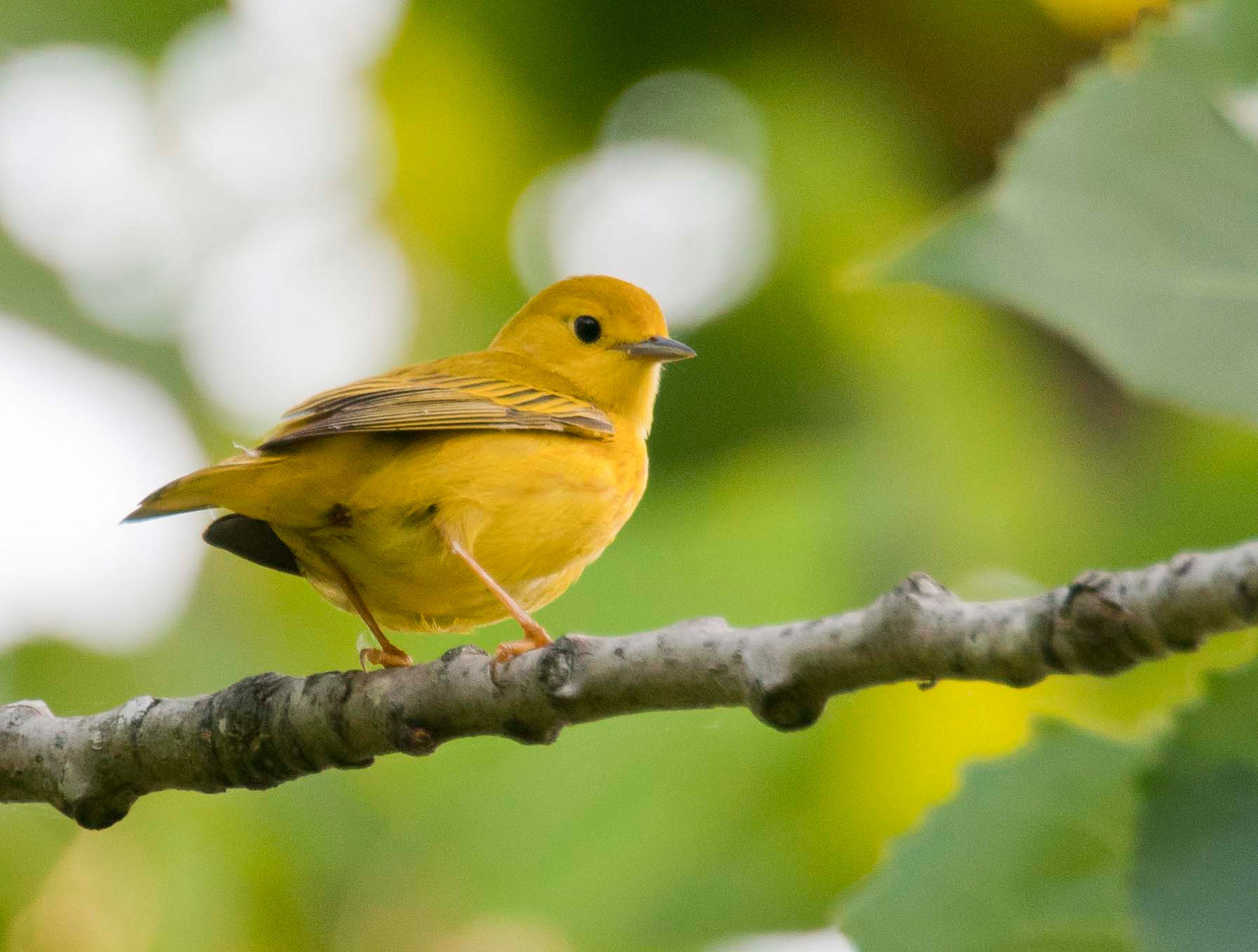
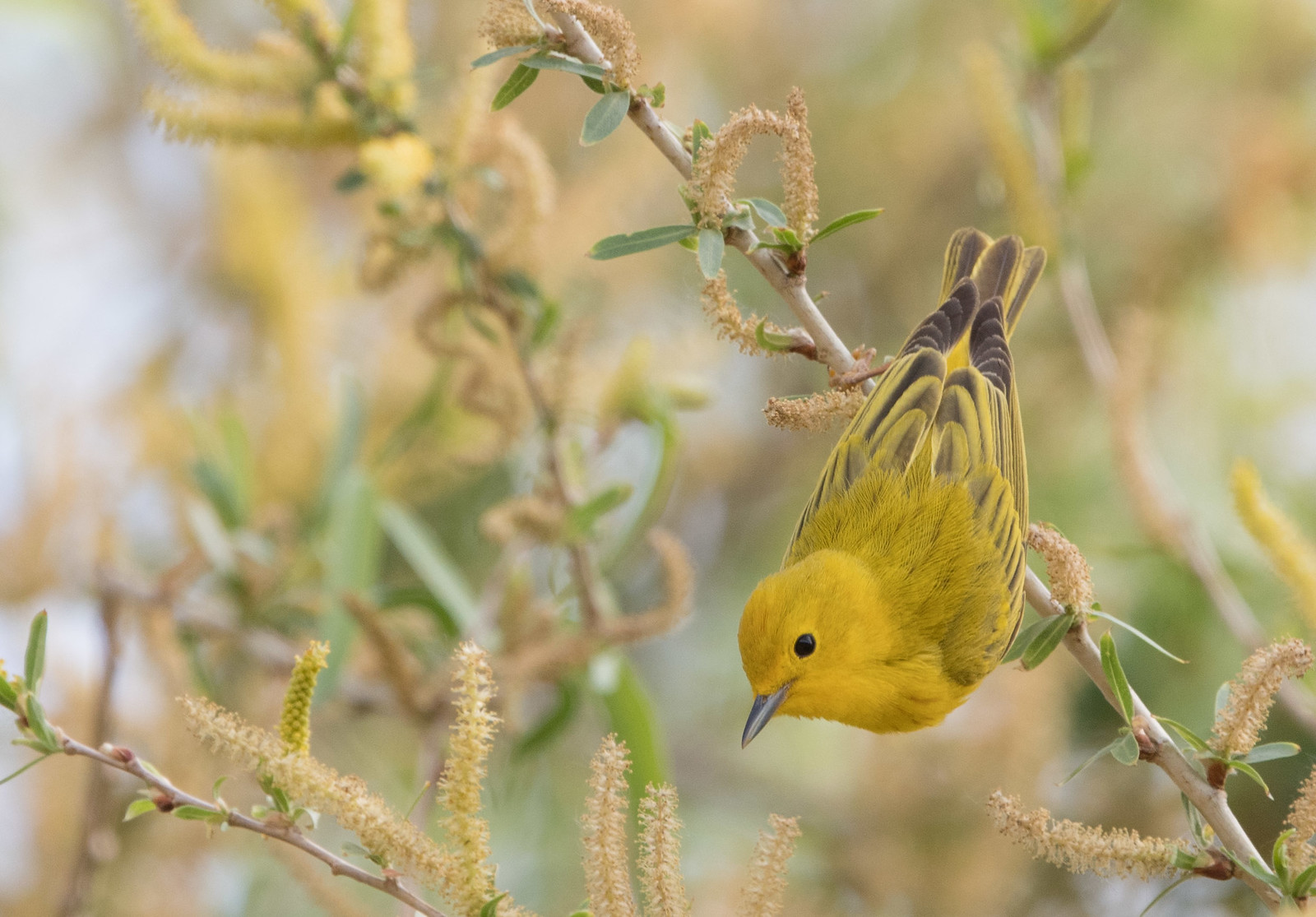
Females are not as brightly colored as males, and they lack the prominent red streaks. Both males and females have yellow undertail coverts.
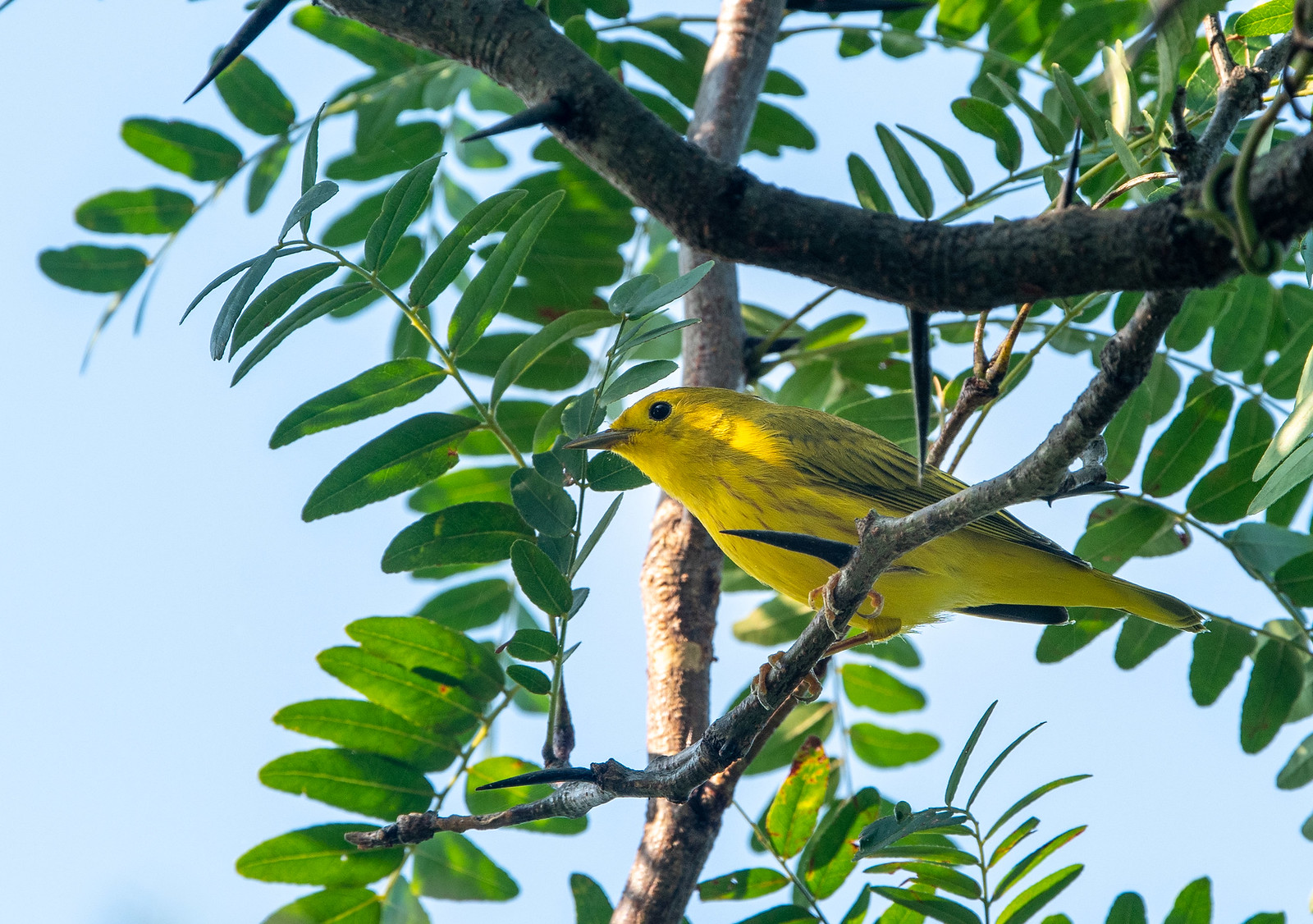
Fall: Fall adult males resemble spring adult males, but they tend to have less streaking. Fall adult females are similar to spring adult females.
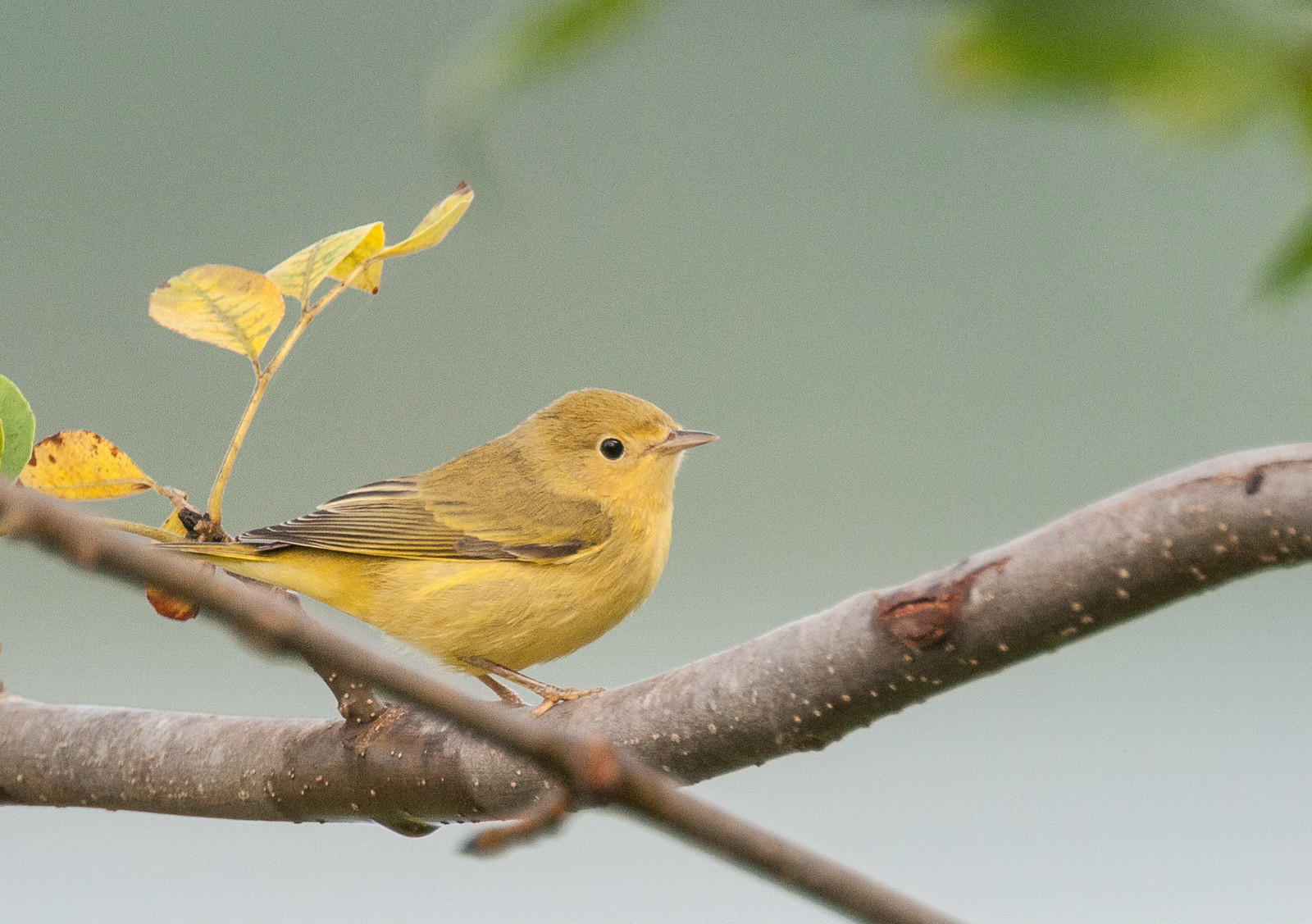
Some first-year birds of both sexes are a drab olive green or brown, and they can be confused with either Nashville or Orange-crowned Warblers.
Vocalizations
The Yellow Warbler's song is a perky sweet-sweet-sweet-a-little-more-sweet.
Hear the vocalizations of the Yellow Warbler.
Notes
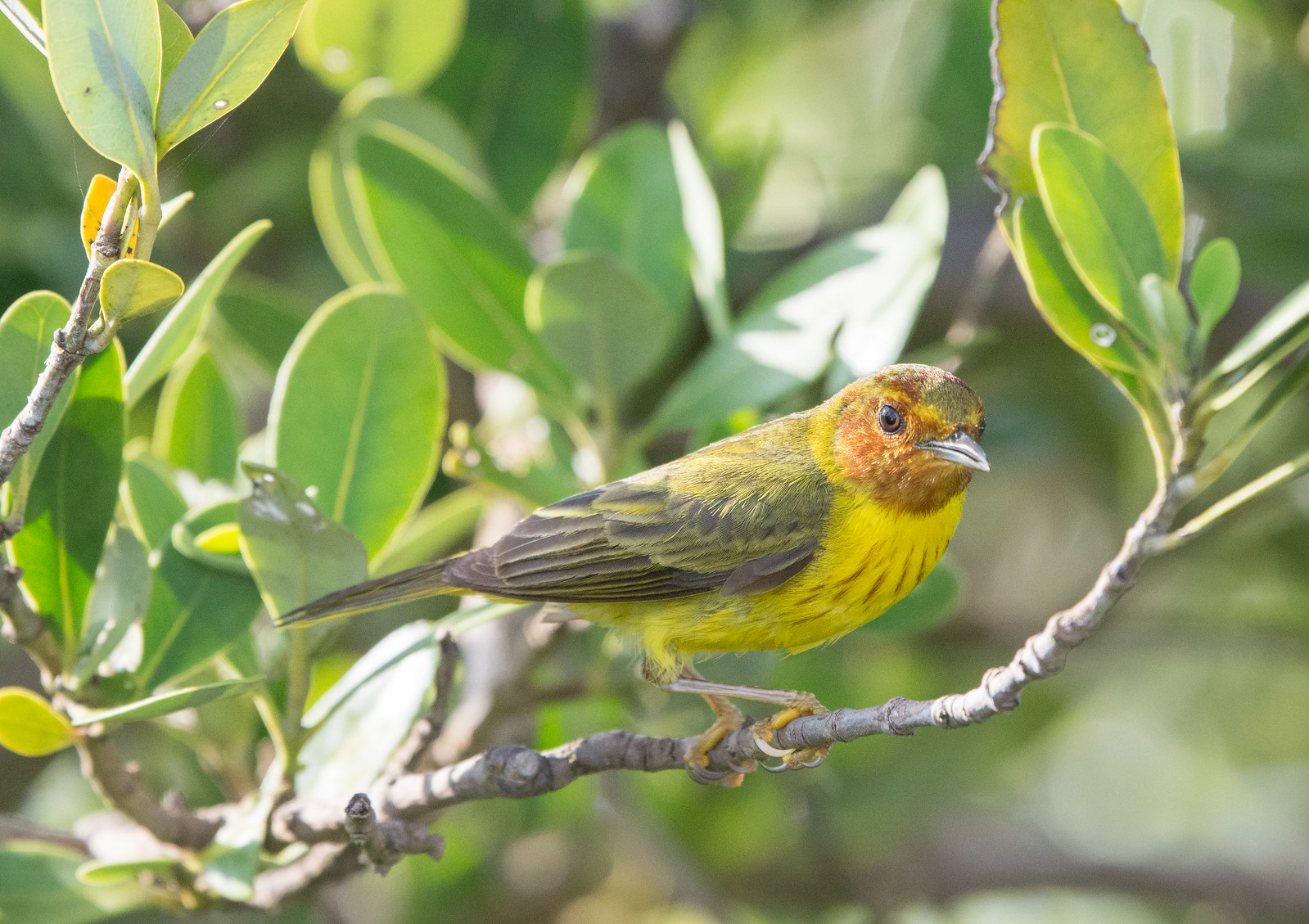
The Yellow Warbler is the most widespread of all the New World warbler species. It has at least 35 subspecies, varying in size and appearance. Some of the subspecies might be split to become separate species. Members of the subspecies who visits Monticello spend the winter in Central and South America. A subspecies called the "Mangrove" Yellow Warbler has varying amounts of chestnut on the head, depending on the age and sex.
Origin of Names
Common Names: Yellow from the plumage. The New World Warblers were named for their similar appearance to European warblers, to whom they are not related. Most of the New World warblers do not warble (sing continuously with notes that change frequently).
Genus Name: Setophaga means moth eating.
Species Name: Petechia in the medical field refers to red spots on human skin created by broken capillaries below the surface. The red streaks on the breast of the male Yellow Warbler resemble this skin condition.
Yellow Warbler video footage
Return to the Index
